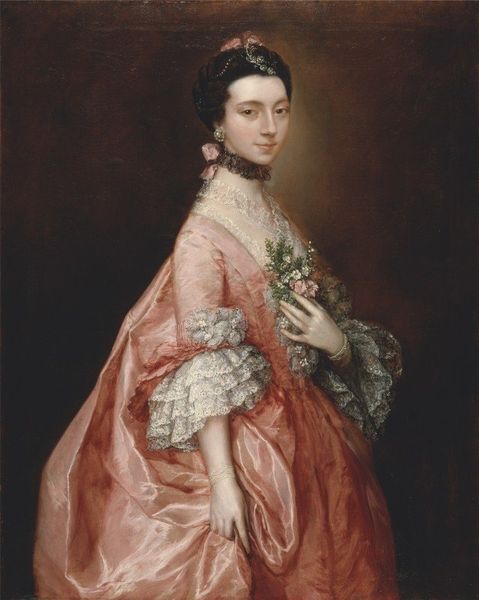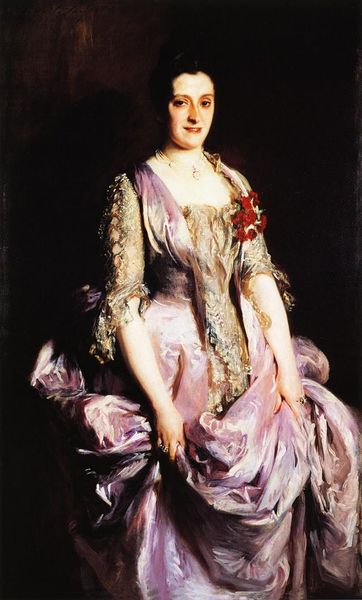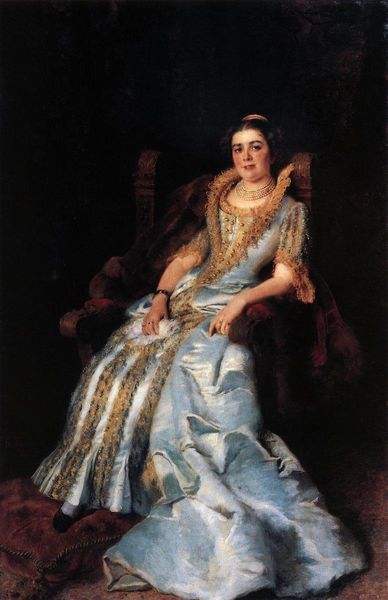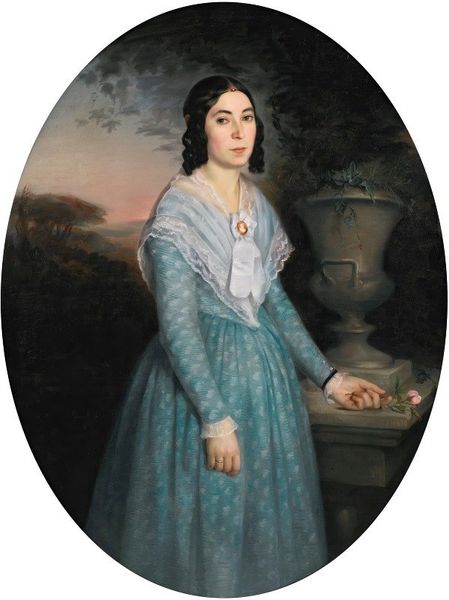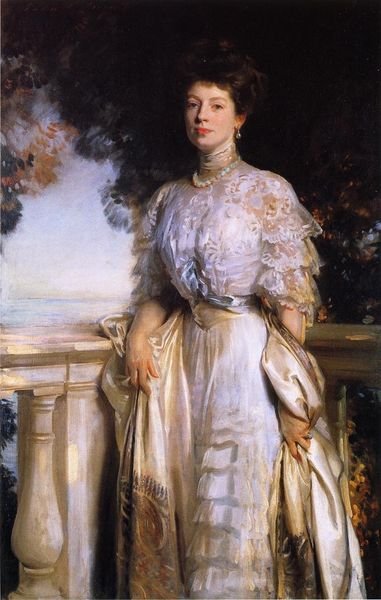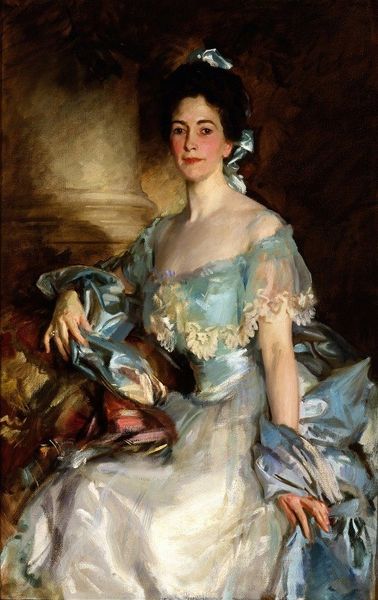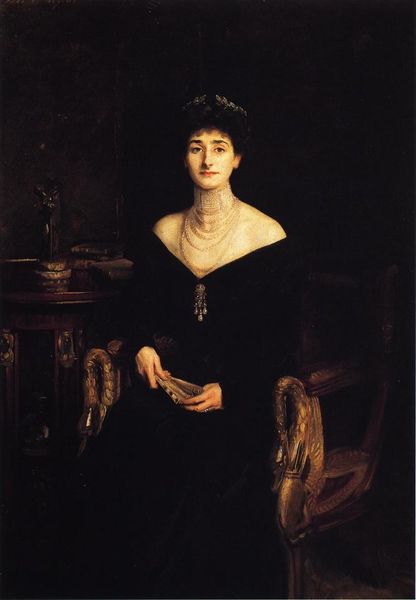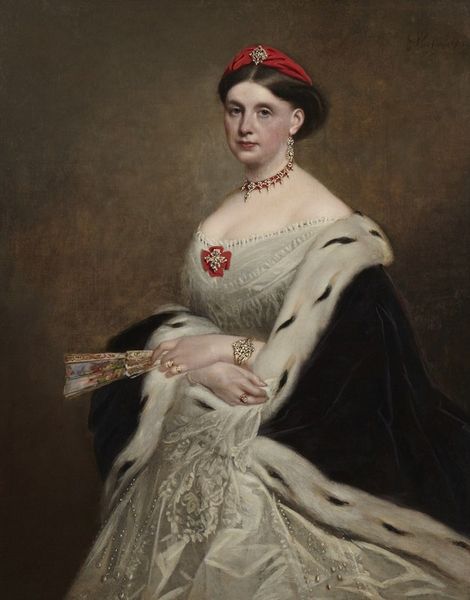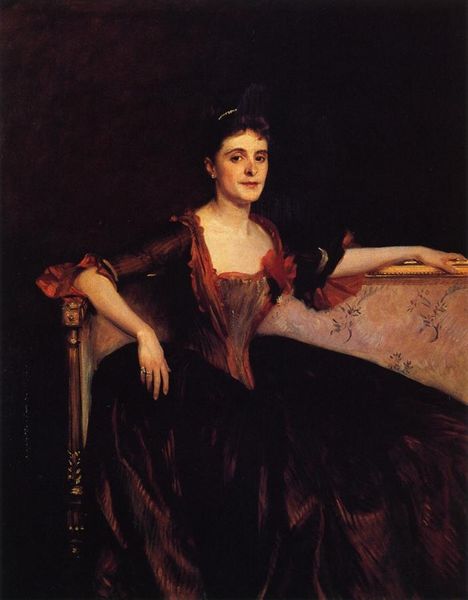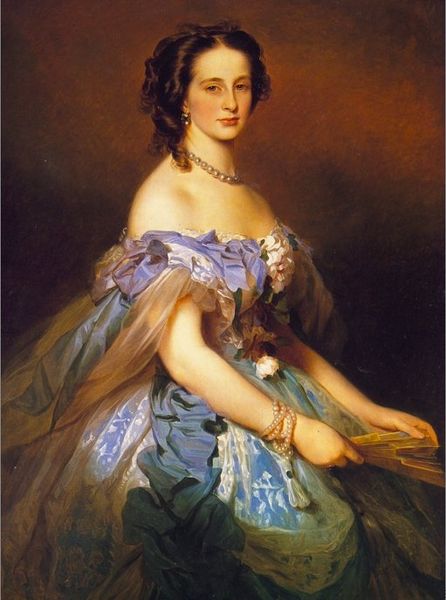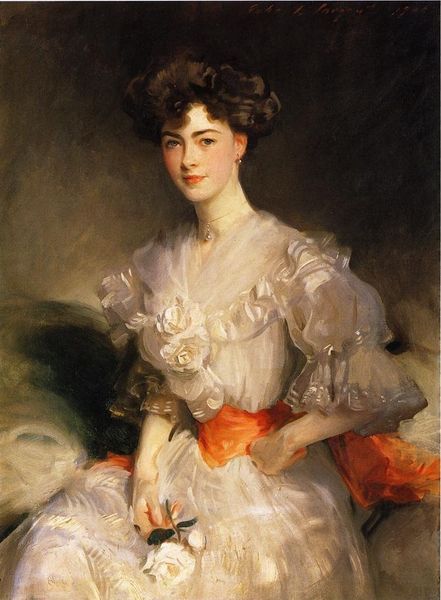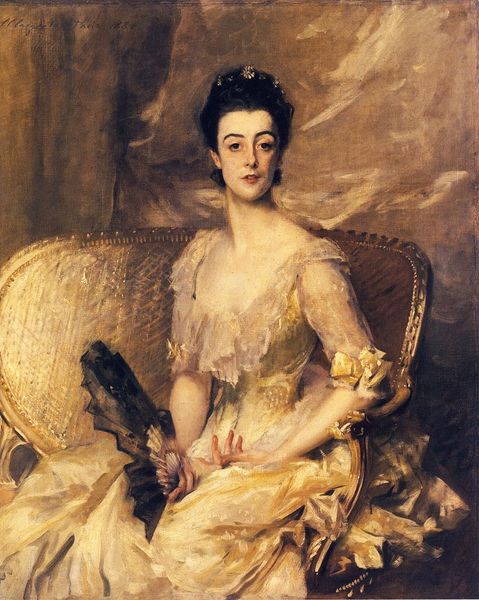
Dimensions: 144.8 x 92.7 cm
Copyright: Public domain
Editor: So, here we have John Singer Sargent's "Mrs. Leopold Hirsch" from 1902, painted in oil. I find her gaze very direct, but something about the setting feels closed off. What's your interpretation of this work? Curator: Sargent often depicted members of high society. Think about the turn of the century, a period marked by strict social codes, particularly for women. Do you see the opulence of her gown as celebratory or constricting? The fabric pattern almost cages her, doesn't it? Editor: I see what you mean. The rich fabric seems almost like a gilded cage. Is Sargent perhaps offering a commentary on the constraints placed upon wealthy women? Curator: Exactly. The 'portrait' genre had, for centuries, been used to display wealth and status. What Sargent is doing, though, is showing a person *within* that construct, and subtly highlighting its impact. Think about the societal pressures regarding beauty, marriage, and motherhood during that era. Can we see those expectations reflected in her reserved posture and solemn gaze? Editor: Definitely. Her gaze feels both strong and sad. It’s interesting to think of it not just as a beautiful portrait but also as a record of social expectations. Curator: And a subtle critique. It invites us to consider how social positionality shapes identity. Even wealth comes at a price. Editor: I had never considered a portrait in such intersectional terms! I was so focused on the aesthetic appeal, that I wasn't thinking about her as a woman within society at the turn of the century. Curator: Seeing art in a social context can change everything, right?
Comments
No comments
Be the first to comment and join the conversation on the ultimate creative platform.
